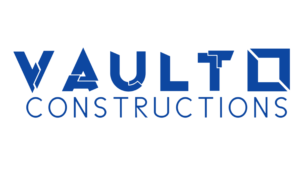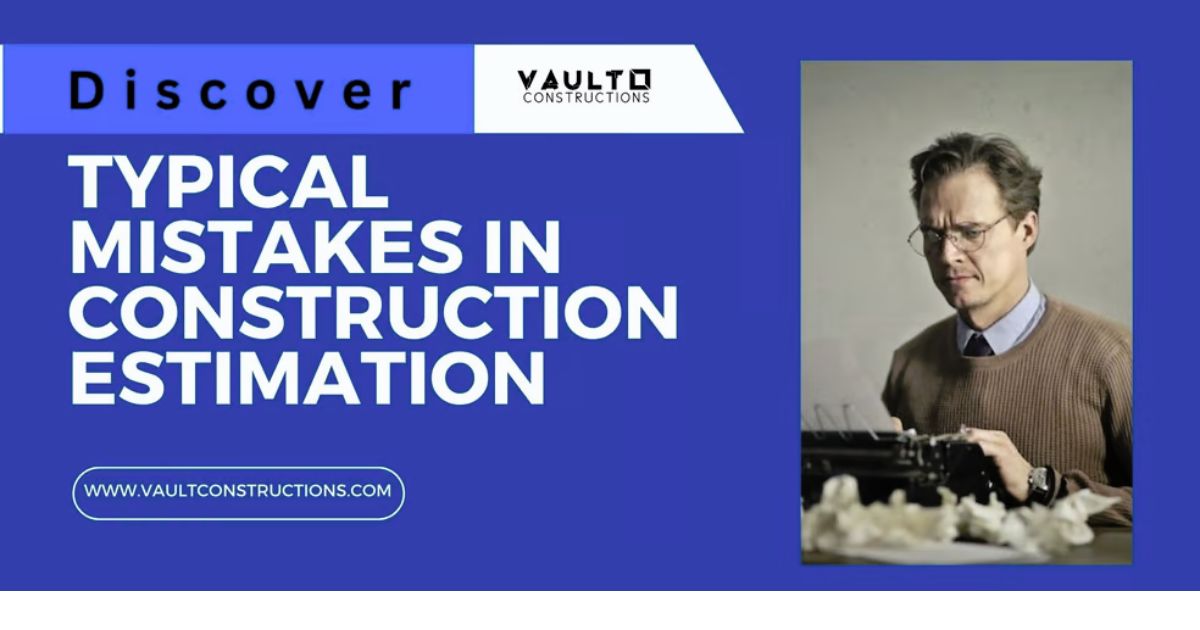Preventing Typical Mistakes in Construction Estimation
A building project’s success depends on an accurate cost estimation. An incorrect estimate can cause budget overruns, schedule delays, and even project collapse. As a result, it’s crucial to recognize and stop frequent errors that happen during the construction estimation process. Construction industry experts may increase their accuracy and guarantee the success and efficiency of their projects by proactively addressing these problems. We will cover some common blunders in building estimation in this article and offer tips on how to avoid them.
1. Use Estimation Software and Technology: To speed up the estimation process and reduce errors, use construction estimation software and technology. Calculations can be automated with estimation software, which also provides precise material costs and has built-in safeguards. Additionally, use CAD software for accurate quantity takeoffs and 3D modelling to correctly visualize the project.
2. Conduct Periodic Audits of the Estimation Process: Conduct periodic audits of the estimation process to assess its efficacy and pinpoint areas that might use improvement. Reviewing prior projections, contrasting them with actual project expenses, and deciphering the causes of any disparities are all part of this process. Determine reoccurring errors or weak points in the estimation process, then take remedial action to stop them from happening again.
2. Ignoring site conditions and environmental considerations: Underestimating the influence of site conditions and environmental considerations on construction projects is another frequent error. It is crucial to carry out an in-depth site inspection and take into account elements like soil characteristics, accessibility, topography, and weather patterns. Contractors can prevent unforeseen costs and delays by include these aspects in the estimation.
3. Inaccurate Quantity Takeoffs: Estimation errors are frequently caused by inaccurate quantity takeoffs. These mistakes may be the result of inaccurate or inadequate measurement calculations. To avoid this, construction experts can make use of contemporary technology, including takeoff tools and computer-aided design (CAD) software. It is important to thoroughly evaluate the quantity takeoffs and compare them to the project drawings and requirements.
4. Ignoring Change Orders and Scope: Creep Change orders and scope creep can greatly affect how much a construction project costs. Cost overruns and delays might result from the estimation process failing to take into account future adjustments or alterations. To account for unanticipated changes, a formal change order procedure must be established, and the initial estimate must contain a contingency. In order to spot and swiftly manage any scope creep, regular contact with clients and project stakeholders is also essential.
5. Insufficient Market Research: Poor estimating might be caused by a lack of detailed market research. Location and market factors can affect construction costs, including material pricing, labour rates, and subcontractor charges. It is essential to compile up-to-date, reliable data on regionally-specific market trends, material costs, and labour rates. To ensure accurate and competitive pricing, this data should be incorporated into the estimation process.
6. Failing to take project hazards into account: There are a number of dangers that construction projects are prone to, including unforeseen site circumstances, alterations to regulations, and labour shortages. Financial and schedule inconsistencies may result from failing to take these risks into account during estimating. To reduce potential hazards, it is crucial to carry out a thorough risk assessment and assign contingency reserves. Contractors can reduce the financial impact of unforeseen circumstances on projects by taking these uncertainties into consideration.
7. Lack of Review and Collaboration: Finally, errors may result from underestimating the importance of Review and Collaboration during the Estimation Process. Instead than working alone, estimators should maintain constant contact with project managers, engineers, and other key stakeholders. Collaborative discussions and reviews can be used to spot potential errors, verify assumptions, and increase the estimation’s overall accuracy.
Also Read: The Value of Proper Site Management in Construction
8. Create Effective Communication Channels: Accurate communication is necessary to avoid estimation errors. Engage in regular communication with all parties involved in the project, such as the client, the architect, the engineer, and the subcontractor, to collect correct data and elucidate any requirements. To guarantee a mutual awareness of the project’s scope, actively listen to their opinion and clarify any worries or ambiguities.
9. Utilize Verifiable Information and Examples Learned: One of the most outstanding ways of keeping away from botches is to gain from past endeavors. Keep a database of previous information, such as estimates, project expenses, and lessons learned. Examine this data to spot trends, recurring problems, and areas where estimating accuracy could be raised. To increase the accuracy of future estimates, take into account these insights.
10. Insufficient Planning and Documentation: Poor planning and documentation is one of the most common errors in construction estimation. Estimates can be wrong if sufficient information is not gathered about the project’s requirements, materials, labour, and other necessary resources. It is essential to devote enough time to project planning and provide thorough documentation in order to avoid this. This entails taking exact measurements, comprehending the scope of the project, and including all pertinent information in the estimation process.
11. Involve Experienced Estimators: Experienced estimators’ knowledge is crucial for avoiding estimation errors. Assign competent individuals who have a thorough awareness of building procedures, material pricing, and industry norms. Their experience can be used to evaluate risks, spot potential problems, and offer reasonable estimates based on their knowledge and practical experience.
12. Implement a peer review: procedure in which estimators critique one another’s work. This cooperative process makes it easier to spot mistakes, inconsistencies, or forgotten details. Encourage team members to provide honest and helpful comments so that estimates can be thoroughly reviewed and validated before being finalized.
13. Ignoring site conditions and environmental considerations: Underestimating the influence of site conditions and environmental considerations on construction projects is another frequent error. It is crucial to carry out an in-depth site inspection and take into account elements like soil characteristics, accessibility, topography, and weather patterns. Contractors can prevent unforeseen costs and delays by include these aspects in the estimation.
13. Conduct Periodic Audits of the Estimation Process: Conduct periodic audits of the estimation process to assess its efficacy and pinpoint areas that might use improvement. Reviewing prior projections, contrasting them with actual project expenses, and deciphering the causes of any disparities are all part of this process. Determine reoccurring errors or weak points in the estimation process, then take remedial action to stop them from happening again.
14. Continual Professional Development: Construction estimate is a dynamic area, therefore it’s important to stay current on rules, trends, and emerging technology. Encourage estimators to continue their professional growth by attending workshops, conferences, and training sessions. Utilizing a continuous learning strategy guarantees that estimators have access to the most up-to-date information and resources to increase estimating accuracy.
Conclusion:
In conclusion, avoiding common estimation errors is essential to the success of building projects. Construction professionals can considerably improve the accuracy of their predictions by avoiding typical mistakes including inadequate planning, erroneous quantity takeoffs, inadequate market research, and failing to consider project hazards. The estimation process can be made even better by incorporating techniques like open lines of communication, the use of historical data, the use of estimation software and technology, the involvement of experienced estimators, peer reviews, regular audits, and the promotion of continuous professional development. The basis for a project’s successful execution is accurate estimation, which enables contractors to successfully control costs, adhere to deadlines, and produce outcomes of the highest caliber. Construction professionals may reduce risks, prevent cost overruns and delays, and guarantee the profitability and on-time completion of projects by taking proactive actions and applying lessons learned from previous projects




Leave a Reply
Want to join the discussion?Feel free to contribute!